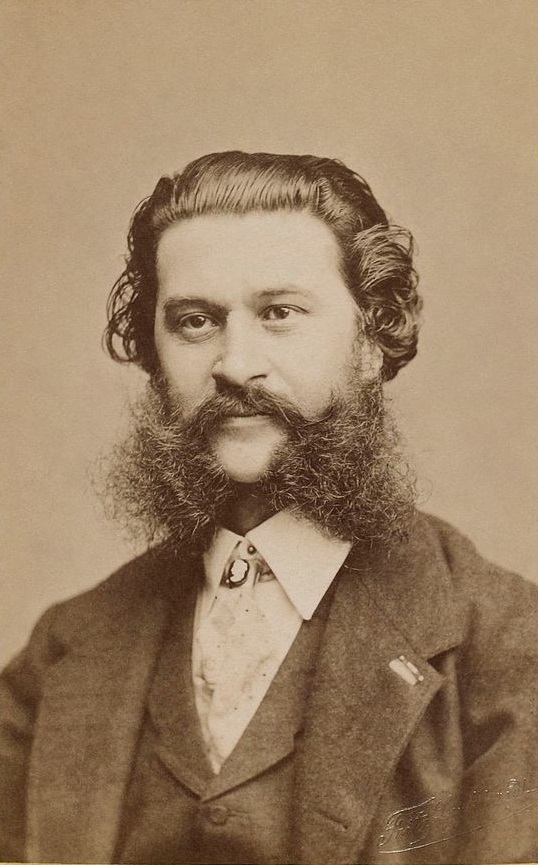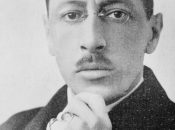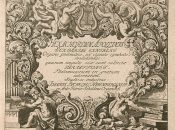Johann Strauss II (1825–1899), often referred to as the “Waltz King,” was an Austrian composer and conductor renowned for his captivating waltzes and light-hearted compositions. Born in Vienna, he hailed from a musical family, with his father being a well-known composer as well.
Strauss gained widespread acclaim for his dance music, particularly his waltzes, which captured the elegance and vivacity of 19th-century Vienna. His compositions like “The Blue Danube” and “Tales from the Vienna Woods” remain iconic examples of the Viennese waltz tradition. These compositions embodied the charm and grace of Vienna’s society at the time, becoming synonymous with the city’s cultural identity.
Strauss’s music transcended borders and gained popularity throughout Europe and beyond. His works were often performed at grand balls, social events, and concerts, enchanting audiences with their lively melodies and rhythmic exuberance. His exceptional skill in crafting melodies that resonated with both aristocrats and the general public contributed to his enduring popularity.
The composer’s influence extended beyond waltzes, encompassing polkas, marches, operettas, and other light musical forms. Strauss’s operettas, such as “Die Fledermaus,” achieved immense success, blending comedic storytelling with melodic brilliance. His ability to infuse his music with joyous energy and emotional resonance earned him a lasting place in the pantheon of classical composers, solidifying his status as a cultural luminary of his era and an enduring source of musical inspiration.

Johann Strauss II
Do you want to know more about Johann Strauss II? Here are 45 interesting facts about Johann Strauss II.
- Johann Strauss II was born on October 25, 1825, in Vienna, Austria.
- His full name was Johann Baptist Strauss II.
- Strauss came from a family of musicians. His father, Johann Strauss I, was a renowned composer and his mother, Maria Anna Streim, was from a family of pastry chefs.
- Despite his father’s wishes for him to pursue a non-musical career, Strauss showed a strong inclination toward music from a young age.
- He secretly took violin lessons from a local orchestra conductor.
- Strauss made his public debut as a conductor at the age of 19, leading his own orchestra.
- He composed his first waltz, “Sinngedichte,” at the age of 17.
- Strauss’s elder brother, Josef Strauss, was also a composer and conductor.
- Johann Strauss II is often called the “Waltz King” due to his immense contributions to the waltz genre.
- One of his most famous compositions is “The Blue Danube” waltz, which is often associated with the New Year’s celebrations in Vienna.
- Strauss’s waltzes were known for their captivating melodies, graceful rhythms, and enchanting charm.
- He composed over 500 works, including operettas, polkas, marches, and other dance forms.
- Strauss’s father disapproved of his son’s career choice and even refused to attend his debut concert.
- He married Henrietta Treffz, a singer and actress, against his family’s wishes in 1862.
- Strauss’s marriage to Henrietta caused a rift with his family, including his father, who disowned him.
- Despite the tensions within his family, Strauss’s popularity as a composer and conductor continued to grow.
- His waltzes often featured intricate melodies and orchestration, showcasing his deep understanding of musical structure.
- Strauss conducted concerts throughout Europe, including in England, Russia, and France.
- His music was influenced by both Viennese folk traditions and the popular music of his time.
- Strauss is credited with transforming the waltz from a simple dance into a refined art form.
- He was known for his charismatic and flamboyant conducting style, which added to the excitement of his performances.
- Strauss’s music played a significant role in shaping the cultural atmosphere of 19th-century Vienna.
- His operetta “Die Fledermaus” (The Bat) remains one of the most frequently performed operettas worldwide.
- Strauss’s compositions often captured the spirit of his era, reflecting the social and cultural changes of the time.
- He was associated with the Vienna Philharmonic Orchestra and conducted their annual New Year’s Concert several times.
- Strauss’s works were not limited to waltzes; he also composed polkas, quadrilles, and other dance forms.
- He had a rivalry with his brother Josef, leading to some humorous exchanges between them.
- Strauss was celebrated for his ability to blend elegance and playfulness in his compositions.
- He was admired by contemporaries such as Johannes Brahms and Richard Wagner.
- Strauss’s compositions were embraced by all levels of society, from the aristocracy to the general public.
- Despite his success, Strauss faced financial difficulties due to lavish spending and gambling.
- He often performed in elaborate and extravagant concert tours, earning him a reputation as a showman.
- Strauss composed several successful operettas, including “Die Fledermaus,” “The Gypsy Baron,” and “The Merry War.”
- He continued to compose even when his health began to decline.
- Strauss passed away on June 3, 1899, in Vienna, at the age of 73.
- His death marked the end of an era and the fading of the Viennese waltz tradition.
- The “Johann Strauss Society of Great Britain” was established to promote his music and legacy.
- Strauss’s music has been featured in numerous films, television shows, and commercials.
- His compositions remain a staple of classical music repertoire.
- A statue of Johann Strauss II stands in Vienna’s Stadtpark (City Park) as a tribute to his contributions.
- Strauss’s music continues to be performed by orchestras and ensembles worldwide.
- He is often remembered as one of the most influential composers of light music in the 19th century.
- Strauss’s melodies have an enduring quality that resonates with audiences across generations.
- His music captures the essence of the romantic and charming atmosphere of old-world Vienna.
- Johann Strauss II’s legacy lives on through his timeless compositions, which evoke the elegance and joy of a bygone era and continue to enchant listeners around the world.
Johann Strauss II remains an illustrious figure whose melodies transcended time and space, painting the enchanting spirit of 19th-century Vienna. His legacy as the “Waltz King” endures not only for his unparalleled contributions to the musical landscape but also for his ability to capture the essence of an era in every note he composed. Through the swirling elegance of his waltzes and the vivacious energy of his dance forms, Strauss gifted the world a treasure trove of musical brilliance. His compositions continue to be a bridge to a world of timeless elegance and exuberance, evoking the heart of Vienna’s golden age with each enchanting refrain. Johann Strauss II, forever celebrated, remains a maestro who waltzed his way into the hearts of generations, leaving a legacy of joy and grace that resounds eternally.





